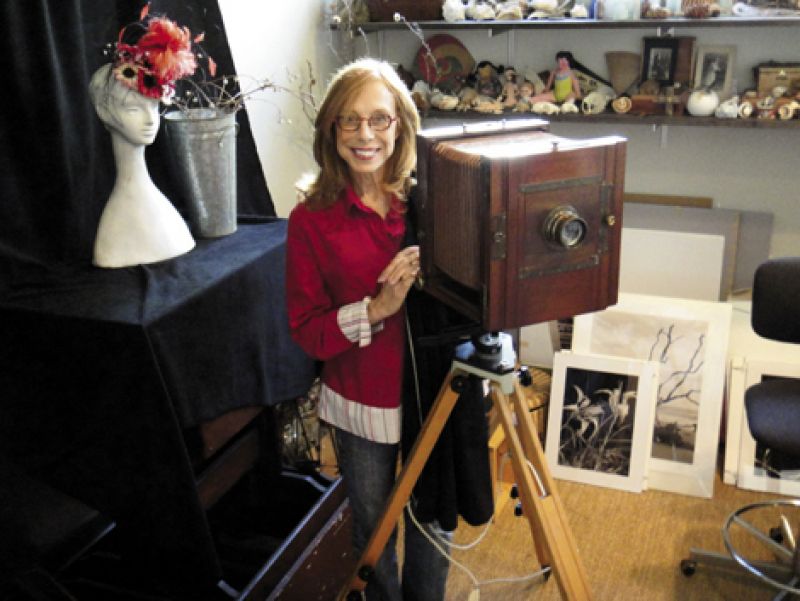
Dark and dreamy botanicals, moss-covered plantations, deserted shorelines, time-frozen faces. These images seem to hail from a bygone era, paying quiet homage to our Southern heritage. The result of local photographer Julia Cart’s calculated contemplations on light, shadow, time, and space, the works relay stories in what she calls the “silent language of natural light.”
Part of the antiquarian avant-garde movement, which emphasizes a contemporary turn back to classical photography techniques, Cart uses a platinotype process that trades digital technology for texture-rich, one-of-a-kind platinum prints. Her 19th-century, French-made box cameras possess no automatic shutter; rather, the artist times each exposure on her watch while buried under a cloth hood. “A single exposure can last three to 25 minutes,” Cart explains. “For me, that time is like a meditation. When I’m alone in the field, the landscape becomes very intimate.”
In addition to working in nature, specifically Bull Island, Botany Island, and Francis Marion National Forest, Cart sets up light boxes in her downtown home studio and develops photos in her darkroom. Arranged on her workspace shelves are her subjects: glass medicine bottles excavated from her yard, a chipped porcelain doll head, ivory bird skulls, and spiral seashells, a collection of found objects waiting to be manipulated into archival still lifes. “More than anything, I consider myself a visual preservationist,” Cart says. “To do photography, you have to observe subjects—the landscape, people, and things—and try to preserve them before they’re gone.”
The Charleston native didn’t discover the art form until her 40s. After attending college in North Carolina for French literature and theater, serving in the Peace Corps in Senegal, and studying mime in Paris for a year, she returned to the Holy City in 1979 and began tinkering with cameras and reading photography books in her spare time. In 1988, she enrolled in a Vermont workshop with Fred Picker, a protégé of Ansel Adams. For five summers, she studied classical techniques, focusing intently on Adams’ Zone System concerning the gradations of black to white within an image.
The skill and patience garnered from her teachers prepared the amateur photographer for a 20-year project, funded by the South Carolina Arts Commission, on Edisto Island’s Gullah culture. Partnering with historian and poet Nick Lindsay, Cart spent years gaining friends in the Gullah community before even setting up her camera. The result: a 200-page collection of stories and photos titled And I’m Glad: An Oral History of Edisto Island (Arcadia Publishing, 2005). “In the book, there’s a picture of a woman sitting on what looks like a rock,” she says, “but it’s actually the ruins of her grandfather’s cabin. It took a long time to get photos that intimate, but once I had the people’s trust, I realized how proud they were of their heritage.”
Now, Cart is developing a collection of five- by seven-inch plate prints of flora from the Francis Marion National Forest. Working exclusively in black and white, she compares the beauty of the brushy, tenebrous photographs to music’s minor keys. “Platinum prints evoke a certain mood, just like the minor keys in music—somewhat melancholy, reflective, and timeless,” she says. The curve of the yellow trumpet, the veins of the pitcher plant, the symmetry of the magnolia all connect this artist with the “wabi-sabi”—beauty in impermanence—that compels her under a hood to preserve our Southern heritage with her old-fashioned lenses.